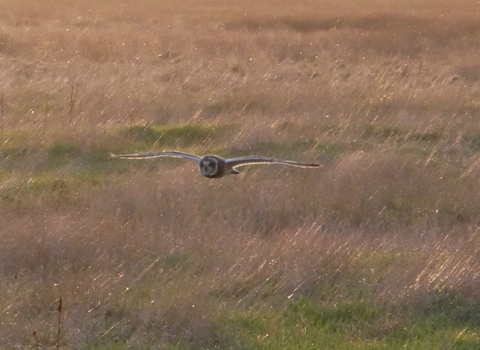
©Danny Green/2020VISION

©Terry Whittaker/2020VISION
Short-eared owl
The short-eared owl, or 'Shortie', is an unusual owl because it prefers to be out and about in the daytime. It is most easily spotted in winter, when resident birds are joined by migrants. Look out for it over moorlands and saltmarshes.
Scientific name
Asio flammeusWhen to see
January to DecemberSpecies information
Category
Statistics
Length: 34-42cmWingspan: 1m
Weight: 330g
Average lifespan: est. 4-12 years
Classified in the UK as Amber under the Birds of Conservation Concern 5: the Red List for Birds (2021).
About
Short-eared owls mainly hunt during the daytime, flying low over moorland, grassland and saltmarshes where they feed on field voles and small birds. About the same size as the barn owl, but with long wings, the short-eared owl breeds in North England and Scotland, but can be seen more widely in winter. They nest on the ground in scraped-out hollows lined with grass and downy feathers.How to identify
The short-eared owl is mottled yellowy-brown above, paler underneath and has dark circles around its yellow eyes. Short 'ear tufts' provide its common name. The similar long-eared owl is darker with orange-red eyes and long ear tufts and is usually found near woodland.Distribution
Nests on uplands in the north of the UK. Winters in the lowlands of central and southern England and Wales, particularly around the coast.In our area
Short-eared owls are now a very rare site in Shropshire. They are most likely to be seen on the mosses in the north of the county when they move down from the uplands at the end of the breeding season.
Did you know?
Some short-eared owls migrate here from Scandinavia, Russia and Iceland for the winter and can occasionally be seen flying in off the sea.Watch
Short-eared Owl (https://vimeo.com/452226134/2f450c41cf)
Short-eared Owl by Russell Savory
Short-eared owls are now a very rare site in Shropshire. They are most likely to be seen on the mosses in the north of the county when they move down from the uplands at the end of the breeding season.

